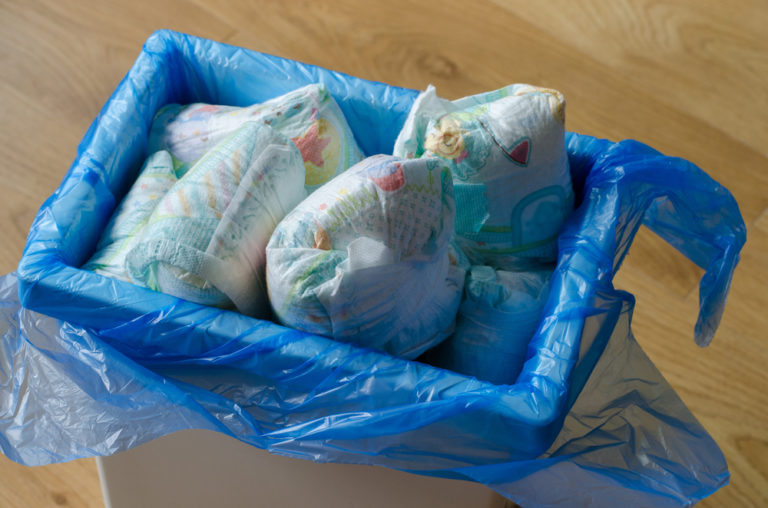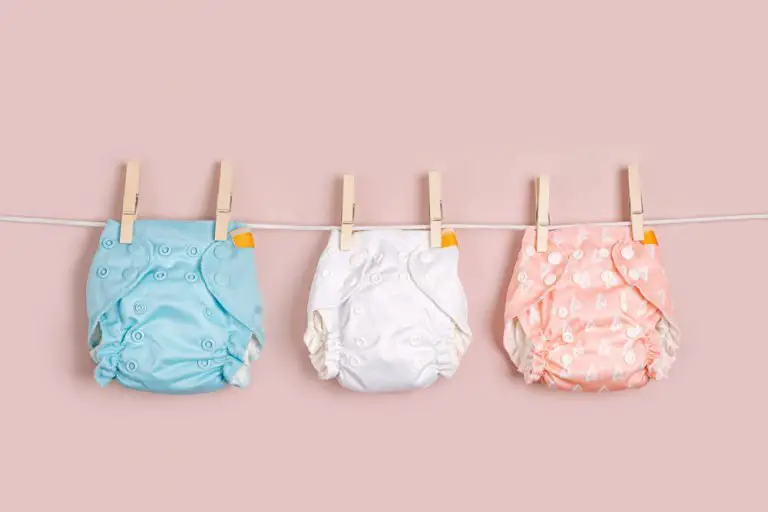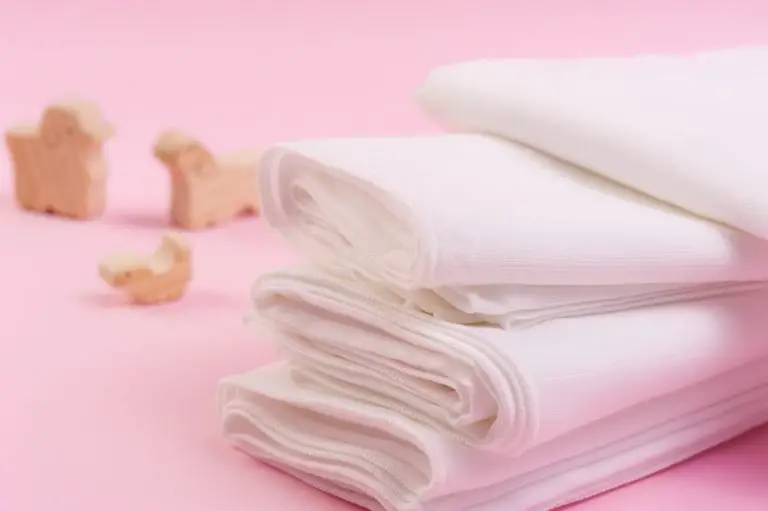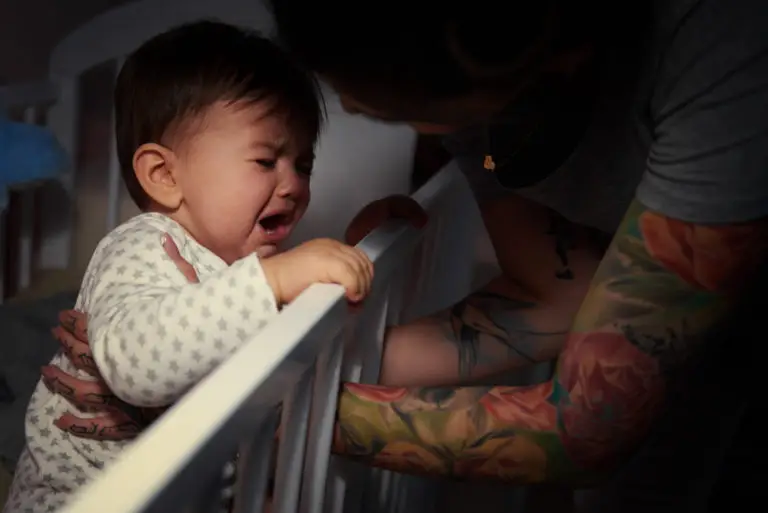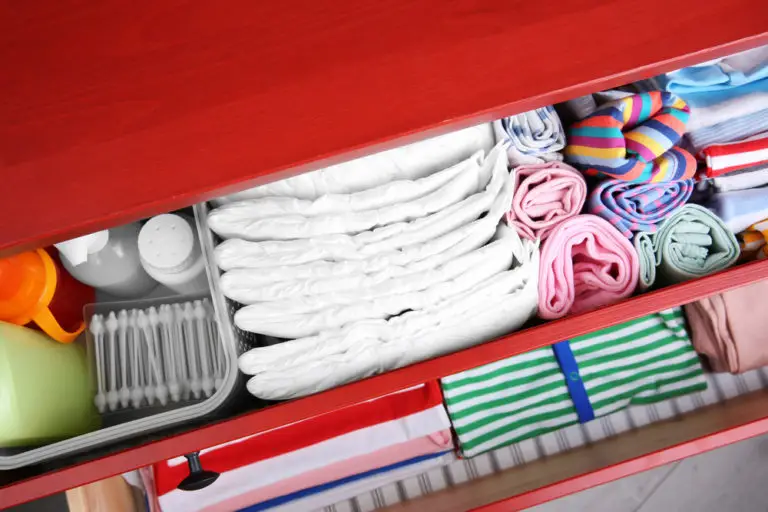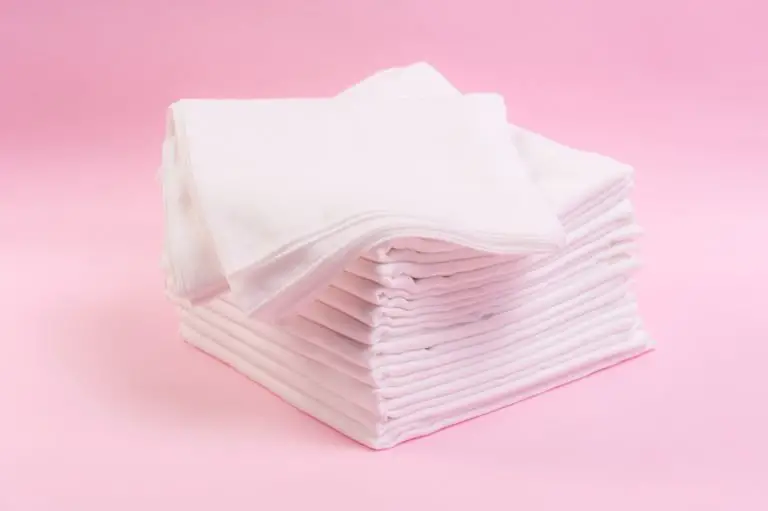15 Tips to Stop the Cloth Diapers Leaking Problem (2024)
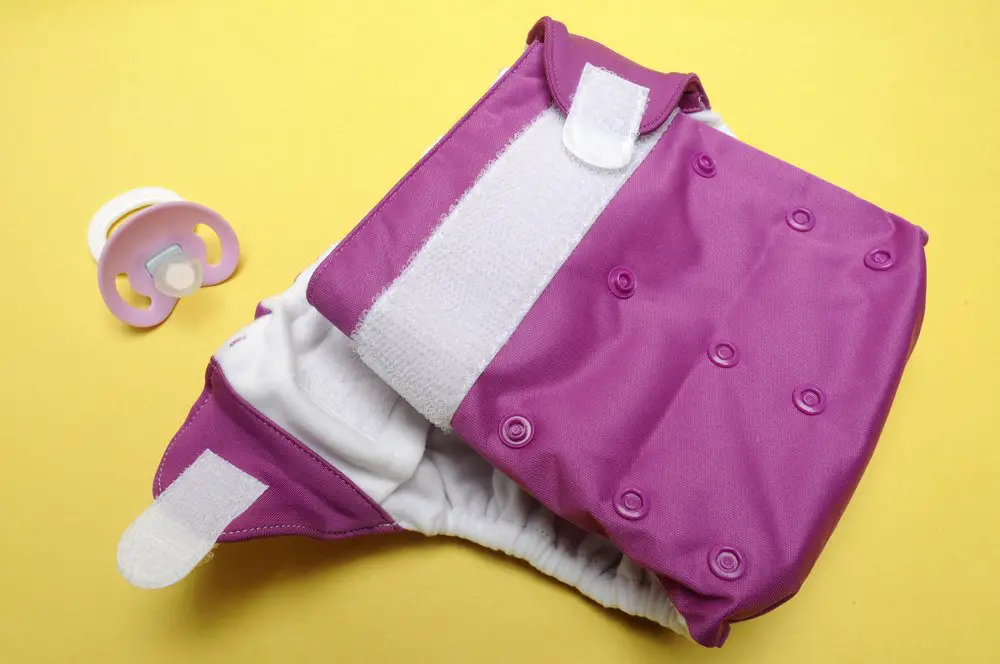
Anyone who has used cloth diapers knows that certain styles are prone to leaks. In fact, some people say that cloth diapers leaking is one of the primary reasons they choose not to use them. It is true that disposables fit snuggly and leak less, but the good news is that cloth diapers can be just as leakproof!
1. Buy the Right Size Diapers and Covers
This probably sounds like a no-brainer, but the first step in stopping leaky cloth diapers is purchasing the correct size.
As a new parent or someone new to cloth diapers, you may not even realize they come in different sizes. But much like disposables, cloth diapers come in a range of sizes from newborn to XL.
One of the common areas for an off-fit is around the legs. Cloth diapers leaking around the leg occur because the elastic bands are not sized correctly.
If you can fit your finger between the elastic and their leg they are too loose! You may need a smaller size diaper or you may need to adjust the bands.
Cloth diaper sizes differ from disposables and will vary from brand to brand. However, in general, newborn diapers are for babies under 10 lbs.
Smalls fit babies 10-17 lbs. Mediums Fit 17-25lbs and Large fit 25+ lbs. Some brands made XL for children over 35lbs.
2. Prep Your Diapers
Unlike disposables, you cannot take a brand new cloth diaper and place it directly onto your baby’s bottom. Well, I mean you can, but you are setting yourself up for a cloth diaper leak.
New cloth diapers need to be prepped. So what does prepping cloth diapers mean?
First start by washing your new cloth diapers three to five times. Some diapers take more washes than that, but three to five is a good starting point.
You should also be prepping your cloth diaper inserts. Diapers and inserts made from natural materials like hemp, cotton, bamboo, etc., contain the natural oils of the fiber they were made from.
Some of these oils will make your diapers less absorbent at first.
Don’t feel like you need to wash your diapers a dozen times before using them, even if some fabrics might need that to become fully absorbent.
After a handful of washes, they will be much more absorbent than they were straight out of the package.
3. Use the Right Diaper Cream
Believe it or not, diaper cream may actually be the cause of your cloth diaper leaks! Diaper creams are designed to keep moisture off your baby’s bottom and prevent diaper rash.
In a disposable diaper, this is a great combination. However, in cloth diapers, it could be why your cloth diapers are leaking.
The ingredients in petroleum and zinc-based diaper creams are designed to form a protective layer between your baby’s skin and harmful enzymes in their poop, making their bottoms wet and sore.
The problem is, that these same protective ingredients can also leave a water-resistant barrier on your cloth diapers.
This barrier doesn’t matter with disposables because you toss the diaper away each time. But continued use of diaper creams can cause build-up and even damage your cloth diapers leading to leaking cloth diapers.
Instead, consider diaper creams approved for use on cloth diapers such as GroVia Magic Stick – Natural Diaper Balm.
4. Get the Right Diaper Fit
We started this article by mentioning that getting the correct diaper size is important. Along with the right size is achieving the right cloth diaper fit. If you’re experiencing cloth diaper leaks, try adjusting the fit before taking any other major steps.
They might need to fit a little more snugly around your baby’s waist and legs. If you see red lines or marks when you take the diapers off, they are too tight. To perform a cloth diaper fit check, see if you can easily fit your finger inside the elastic, if so, they are too loose.
Cloth diaper elastic can wear out, so if these are old cloth diapers or on their second or third child, that may be the issue. Cloth diaper elastic repair can be tedious and time-consuming. Still, it is a whole lot cheaper than purchasing new cloth diapers!
You may also need to verify that your baby is wearing the right size diaper. If you are experiencing leaks, your child might need to switch sizes.
5. Use a Snappi for Blow-out Issues
If one of your leak problems is blow-outs, you may want to use Snappi diaper fasteners for a more secure fit. Of course, no one can predict a blow-out, but many babies poop on a fairly reliable schedule.
Or, if your little one is prone to blow-outs, consider using the fasteners every time. These fasteners are also helpful when using cloth diapers for heavy wetters or overnight.
Snappi diaper fasteners are safer than using pins and they help your prefolds or flats fit even more snugly and securely. They come in fun, bright colors so it is easy to find ones that fit your style!
Snappi recommends that you use their fasteners on heavier and thicker, woven fabrics as opposed to thin gauze or tight knits.
Of course, nothing can guarantee the prevention of a blowout. But, if you’re using cloth diapers why not consider using these to help out!
6. Increase the Absorbency
If cloth diapers not absorbing is your issue, there are a few tricks you can try to fix this problem. Remember, cloth diapers need prepping, so if they are new, start there.
If on the other hand, you have old cloth diapers, you may need to strip them to get rid of build-up.
Your problem could be you’re simply not changing your baby frequently enough. Cloth diapers need to be changed every 1-2 hours typically, whereas best disposables can go up to 4 or 5 at times. They are naturally less absorbent.
You may need to increase the number of inserts you are using, especially if it is overnight. My son used to leak overnight when I first used cloth diapers until I realized I need to use two heavy-duty liners at night.
Consider where your baby needs the most absorbency. Boys tend to soak in the front, whereas girls typically soak through the middle. Be sure you are placing your inserts in the right spots for maximum absorbency.
7. Remove the Residue Build-up
Even the most diligent of cloth-diaper users will eventually face build-up on their diapers. Build-up can happen due to diaper creams, detergents, water type, or just prolonged use.
Suppose you’ve already checked the fit, added absorbent layers, and know the size is correct. In that case, it could be your cloth diaper’s repelling liquid.
Two of the biggest factors that cause cloth diaper build-up is hard water which leaves mineral deposits and detergent that has not been fully rinsed out.
Cloth diaper fabric is meant to be soft and safe against your baby’s skin, but it does not always play nicely with additives like fabric softeners and dryer sheets.
There is some concern that the ingredients in dryer sheets that make your clothing smell good are actually harmful.
Dryer sheet manufacturers are not required to list their ingredients on their labels, so some of the ingredients may be related to your cloth diapers leaking.
To properly wash your cloth diapers, use a detergent that is formulated for such use. We recommend GroVia Mighty Bubbles Laundry Treatment.
8. Avoid Compression Leaks
Compression leaks are precisely what they sound like. They are leaks caused by compression or too much pressure on the absorbent materials in the diaper.
Compression leaks in cloth diapers usually occur when the diaper is too tight. If you see red marks around your baby’s legs or waist, then you need to loosen the fit of the diaper.
Overstuffing is another way to cause compression leaks. The trick is to find the perfect fit between being too loose and not absorbent enough and not so stuffed the liquid is forced to leak out!
It is also possible to cause compression leaks by pants that are too tight or the crotch buckle of a swing or high chair straps.
The easy fix for these types of leaks is to put your baby in looser clothing and to loosen the strap of the buckle.
9. Add a Microfiber (Not Against the Skin)
Microfiber inserts are the most absorbent type. The downside is they cannot be put directly against your baby’s skin.
I used pocket diapers, so I solely used microfibers, which made my diapers super absorbent. If you are using any other style, you will need to pair them with a natural fiber liner such as charcoal, bamboo, hemp, cotton, or wool.
Leaks sometimes happen with other inserts because your baby may be peeing faster than the liner can absorb the liquid! By pairing a more natural but less absorbent liner with microfiber, you are creating an extra barrier to soak up all that pee!
Leaks of this nature are more common overnight or with children who are getting ready to potty-train because their bodies produce much more urine than tiny babies.
Just remember if you are adding a microfiber insert it should be placed directly against your baby’s skin.
10. Improve the Waterproof Layer
Suppose you have already added a microfiber insert or have doubled up and are still experiencing a leaky cloth diaper. In that case, it’s time to troubleshoot with your PUL.
If cloth diapers are leaking through PUL, it may mean there are cracks or peeling in the waterproof layer.
Cloth diaper PUL is the water-resistant coating or laminate that is used on cloth diaper covers. Over time this layer can begin to wear down, peel, crack, and start to be less resistant.
Harsh cleaners like bleach, vinegar, and other stain removers can have adverse effects on your PUL.
If you suspect that PUL is the culprit causing your diaper leaks, inspect them closely for any cracks or tears. If it is, in fact, the PUL, you will need to replace your diapers.
If you notice PUL cracks and tears within the first few weeks, contact the diaper manufacturer as this is likely the result of a product defect. The company may be willing to replace the diapers for free.
11. Use the Right Laundry Detergent
Not all laundry detergents are designed for use on cloth diapers. While your favorite name-brand detergent may smell tremendous and eliminate stains on your clothing, you may need something different for your cloth diapers.
The wrong type of detergent could damage your cloth diapers, and it can also create build-up on your diapers. When build-up happens, diapers become less absorbent, and therefore leaks occur.
When prepping new cloth diapers, you will need to use the right detergent, but be sure to run an extra rinse cycle or two to ensure all the detergent has rinsed out.
If when washing or prepping your diapers they have a stiff or sticky feeling after they dry they will need to run through the rinse cycle again.
When rinsing doesn’t add any more detergent just continue to rinse on hot until all the laundry detergent has been rinsed out.
12. Change Diapers More Frequently
Cloth diapers need to be changed more frequently than disposables. It is a simple fact. Keep this in mind when deciding whether or not to use cloth diapers. Since they are less absorbent, they need to be changed more regularly.
For a newborn, except to change a cloth diaper once every hour to ninety minutes. As your child grows out of the newborn stage, you should be able to change every two hours.
However, if you are experiencing leaks, it might be because you need to up your diaper change game.
Another upside to changing your baby’s diaper frequently is that you cut down on the chance of them developing diaper rash.
Don’t feel as if you need to completely take off your baby’s diaper all the time; a simple peek inside, or pat on the bottom or front should tell you if it is wet or dirty. If the diaper is dry, wait another thirty minutes and check again.
13. Swap the Old Inserts
Like the PUL, the elastic and the diaper itself can become worn down, so can the inserts. Inserts bear the brunt of absorbing your baby’s pee and get covered in baby poop.
They are the part of the diaper that may need extra washes and rinses as well. If your diapers are leaking, it may be time for new inserts.
Before you purchase all-new inserts, attempt to strip them first to see if that makes a difference. If you’ve gone through the stripping process and your inserts still aren’t absorbing, it may be time to change them out.
If your cloth diaper inserts are “done for,” consider using them as cleaning or dusting cloths. Microfiber cloths make great Swiffer pads!
If nothing else, you can recycle them at a fabric recycling site. If they are made from natural fibers you can also compost them.
14. Recheck the Inserts Positioning
It is possible your leaky cloth diapers are being caused by something as simple as incorrect insert placement. For the insert to be most effective it needs to be placed in the middle and cannot have room to wiggle around.
For boys slide the insert towards the front of the diaper and for girls the insert should be placed in the middle of the crotch area. Boys And girls release pee at different angles because of the placement of their genitals.
It is also possible your inserts are too thin for the diaper you are using. If your baby has grown and you are still using newborn or small-only inserts they may not be able to cover the entire absorbency area thus resulting in leaks.
It is also important to make sure the insert is lying flat. If there are gaps or bunches liquid might be able to leak through.
15. Air Dry Your Cloth Diapers
One last line of defense in protecting your cloth diapers is to air dry them. Air drying is the recommended and approved method for cloth diapers. In fact, some cloth diaper manufacturer explicitly tells you to NOT put their diapers in the dryer.
The hot air from dryers creates additional stress and wear and tear on your cloth diapers and breaks down the PUL. Air dry is not just better for the health of your diaper, but the sun works as a natural stain fighter. The sun also fights bacteria, and what could have more bacteria than a diaper?
Plus, when you air dry your diapers, they will have a natural, fresh-smelling scent without the use of additives or dryer sheets.
If you absolutely must use a dryer, try to air dry them as much as possible then dry them on the dryer’s lowest and gentlest cycle.
FAQ
Do cloth diapers leak?
All diapers leak. Some cloth diaper styles leak more than others but there are steps you can take to mitigate and reduce leaks.
How do I stop my cloth diapers from leaking?
Prep them before their first use, use the right size, check the fit, remove any build-up, avoid diaper creams, and change them regularly.
Do cloth diapers leak more than disposables?
Yes they have a tendency to leak more than disposables, but when used properly you can drastically reduce leaks. Plus they are better for your baby’s bottom than disposables.
How do you keep cloth diapers from leaking at night?
Ensure you are using the right size and the fit is correct. Add an extra absorbent layer like a microfiber and consider using a diaper cover if using all-in-ones or pockets.
Why are my cloth nappies leaking?
There could be several reasons. Start by checking the size and fit of your diaper. If they are still leaking make sure you are using the right amount of absorbency.
How much pee can a cloth diaper hold?
It depends on the brand and the fiber in the diaper but they can hold anywhere between 3/4c. And 2 cups.
Are cloth diapers leak proof?
No diaper is leak proof, not even disposables. However, steps can be taken to make your cloth diapers less likely to leak.
How to make cloth diapers more absorbent?
You may need to add an additional insert, or back up your natural fiber insert with a microfiber insert. Microfiber is very absorbent but cannot be directly next to your baby’s skin.
How to get diaper cream out of cloth diapers?
You will likely have to strip the diaper if build-up has occurred. Try a regular wash cycle first though. Consider using a diaper balm approved for us with cloth diapers.

Laurel Davidson
Laurel brings her passion for parenting and years of problem-solving experiences to ParentingMode. She is the editor of ParentingMode, ensuring that the content is relevant and valuable to the readers. Laurel received her master’s degree in public administration with a certificate in economic development. She is a stay-at-home mom, raising two adorable kiddos, Aurora and Thomas. Laurel enjoys sharing her experience as a parent, traveling, and good food.

